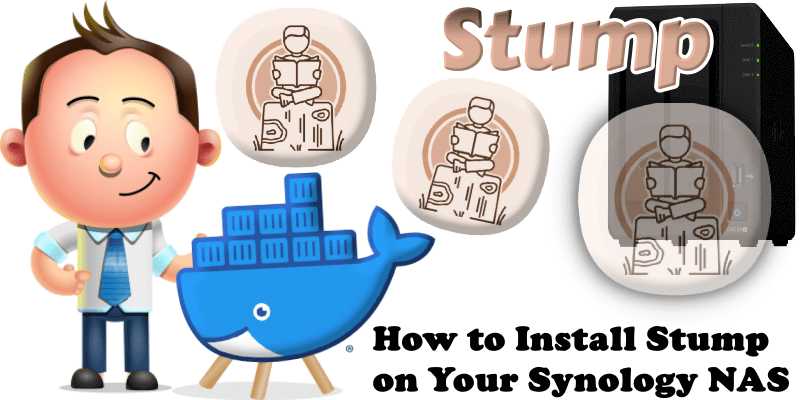
Stump is a free and open source comics, manga and digital book server with OPDS support, created with Rust, Axum, Prisma and React. Designed to be fast, beautiful, configurable, and easy to use. Curate your digital library and stream your media to any device, supporting a wide range of file formats. In this step by step guide I will show you how to install Stump on your Synology NAS using Docker & Portainer.
This guide works perfectly with the latest Stump v0.0.12 release.
STEP 1
Please Support My work by Making a Donation.
STEP 2
Install Portainer using my step by step guide. If you already have Portainer installed on your Synology NAS, skip this STEP. Attention: Make sure you have installed the latest Portainer version.
STEP 3
Go to File Station and open the docker folder. Inside the docker folder, create one new folder and name it stump. Follow the instructions in the image below.
Note: Be careful to enter only lowercase, not uppercase letters.
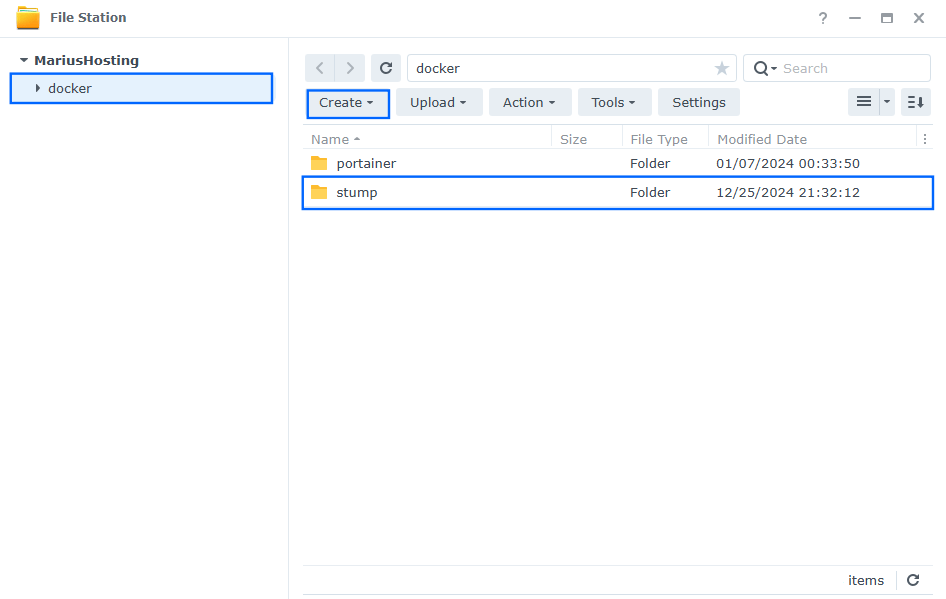
STEP 4
Now create two new folders inside the stump folder that you have previously created at STEP 3 and name them config and data. Follow the instructions in the image below.
Note: Be careful to enter only lowercase, not uppercase letters.
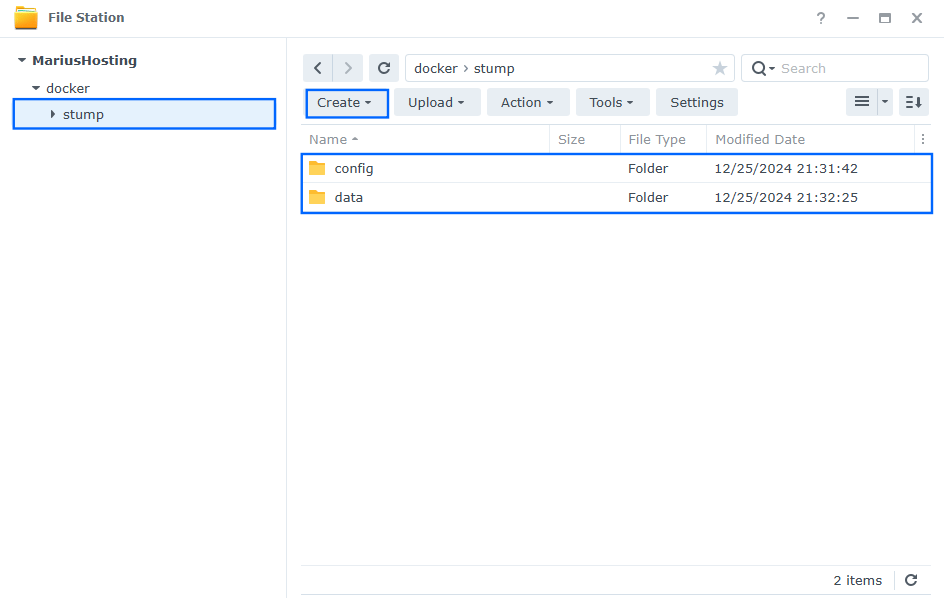
STEP 5
Populate the files folder that you have previously created at STEP 4 with your own comics, pdf, manga etc.
STEP 6
Log into Portainer using your username and password. On the left sidebar in Portainer, click on Home then Live connect. Follow the instructions in the image below.

On the left sidebar in Portainer, click on Stacks then + Add stack. Follow the instructions in the image below.

STEP 7
In the Name field type in stump. Follow the instructions in the image below.
services:
stump:
image: aaronleopold/stump:latest
container_name: Stump
healthcheck:
test: ["CMD-SHELL", "nc -z 127.0.0.1 10801 || exit 1"]
interval: 10s
timeout: 5s
retries: 3
start_period: 90s
volumes:
- /volume1/docker/stump/config:/config:rw
- /volume1/docker/stump/data:/data:rw
ports:
- 10801:10801
environment:
PUID: 1026
PGID: 100
STUMP_CONFIG_DIR: /config
restart: on-failure:5
Note: Before you paste the code above in the Web editor area below, change the value numbers for PUID and PGID with your own values. (Follow my step by step guide on how to do this.)
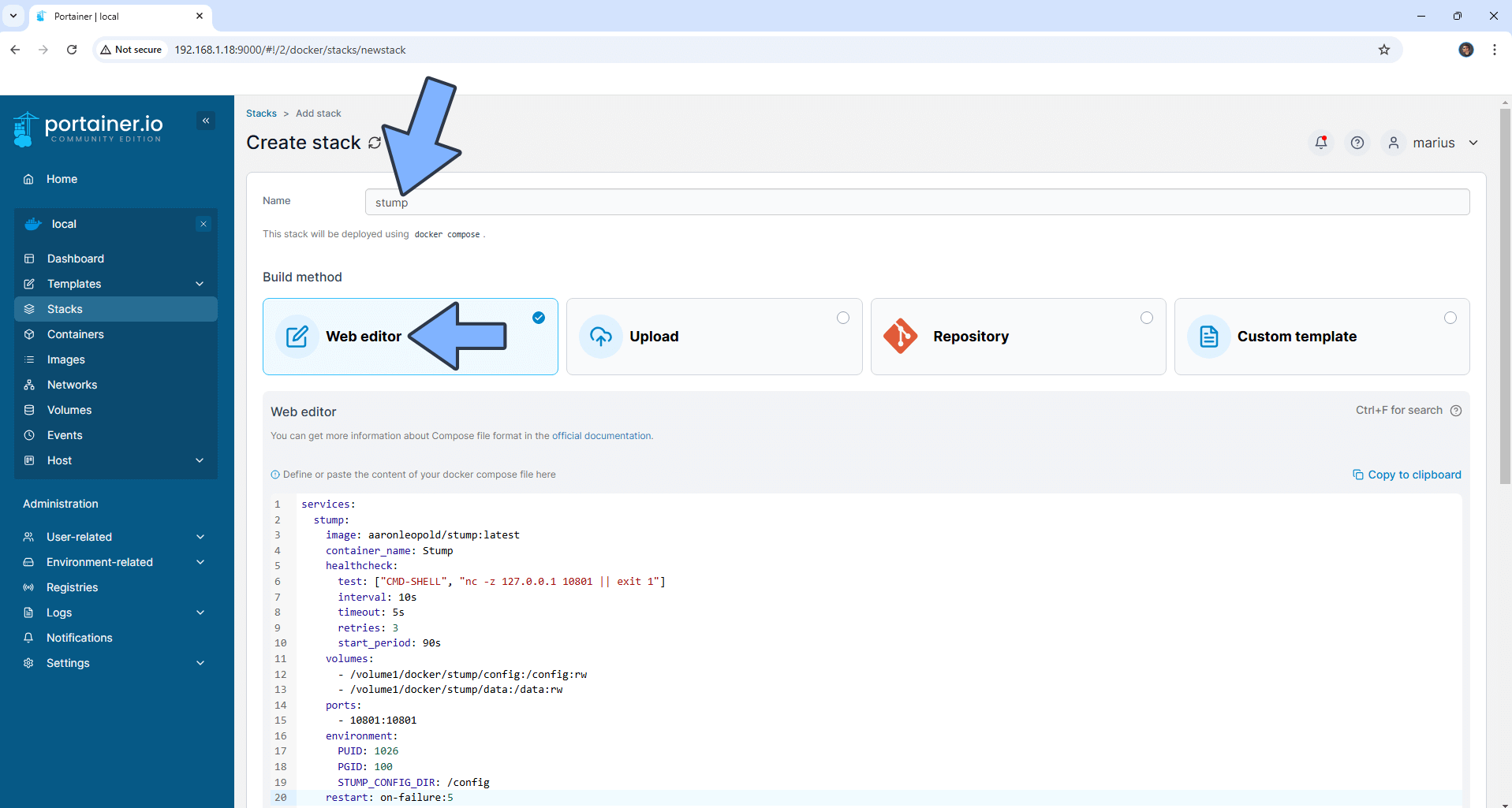
STEP 8
Scroll down on the page until you see a button named Deploy the stack. Click on it. Follow the instructions in the image below. The installation process can take up to a few minutes. It will depend on your Internet speed connection.
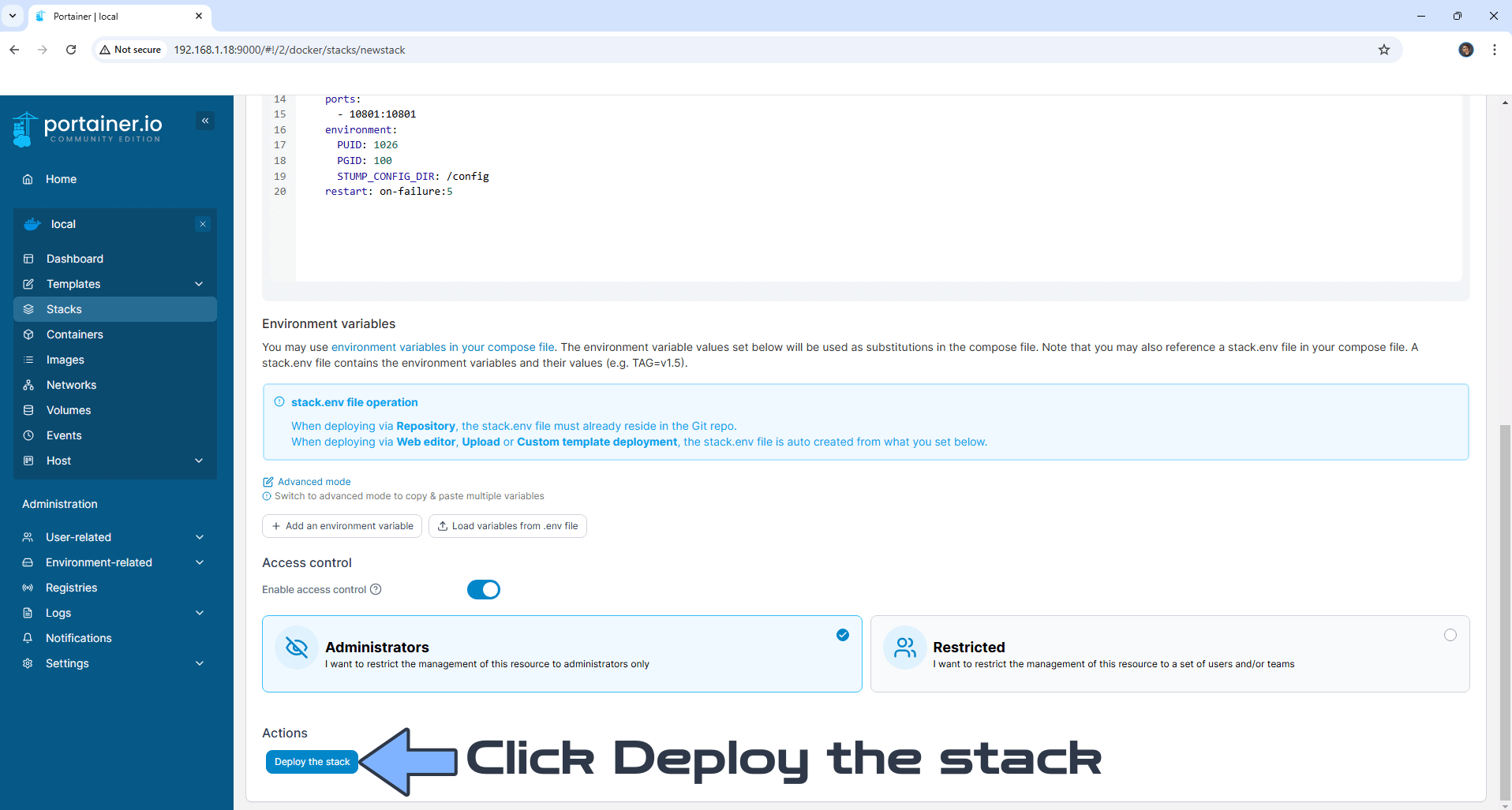
STEP 9
If everything goes right, you will see the following message at the top right of your screen: “Success Stack successfully deployed“.

STEP 10
🟢Please Support My work by Making a Donation. Almost 99,9% of the people that install something using my guides forget to support my work, or just ignore STEP 1. I’ve been very honest about this aspect of my work since the beginning: I don’t run any ADS, I don’t require subscriptions, paid or otherwise, I don’t collect IPs, emails, and I don’t have any referral links from Amazon or other merchants. I also don’t have any POP-UPs or COOKIES. I have repeatedly been told over the years how much I have contributed to the community. It’s something I love doing and have been honest about my passion since the beginning. But I also Need The Community to Support me Back to be able to continue doing this work.
STEP 11
The installation process can take up to a few seconds/minutes. It will depend on your Internet speed connection. Now open your browser and type in http://Synology-ip-address:10801 Create your own Username and Password, then click Create Account. Follow the instructions in the image below.
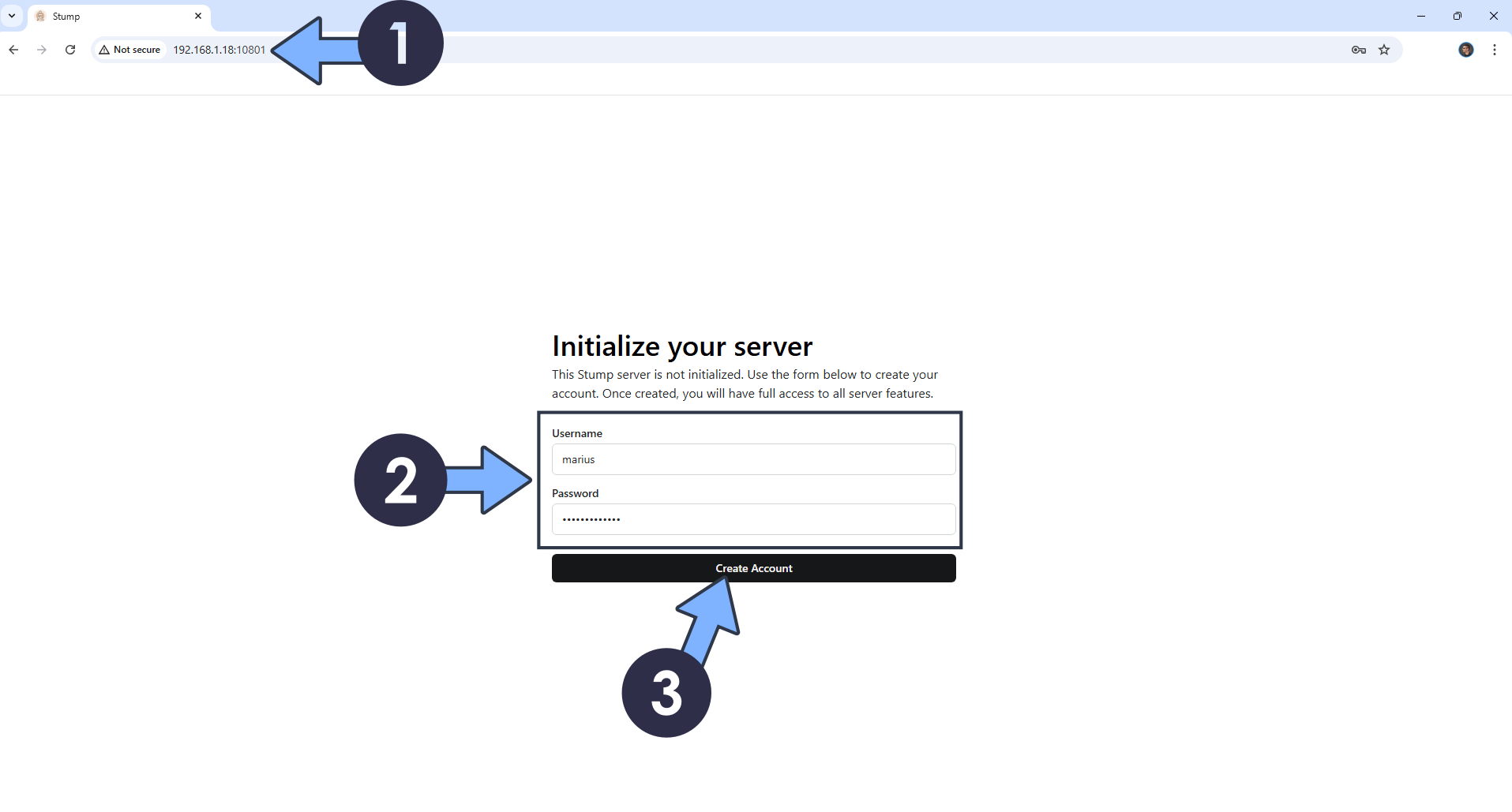
STEP 12
Click Create library. Follow the instructions in the image below.
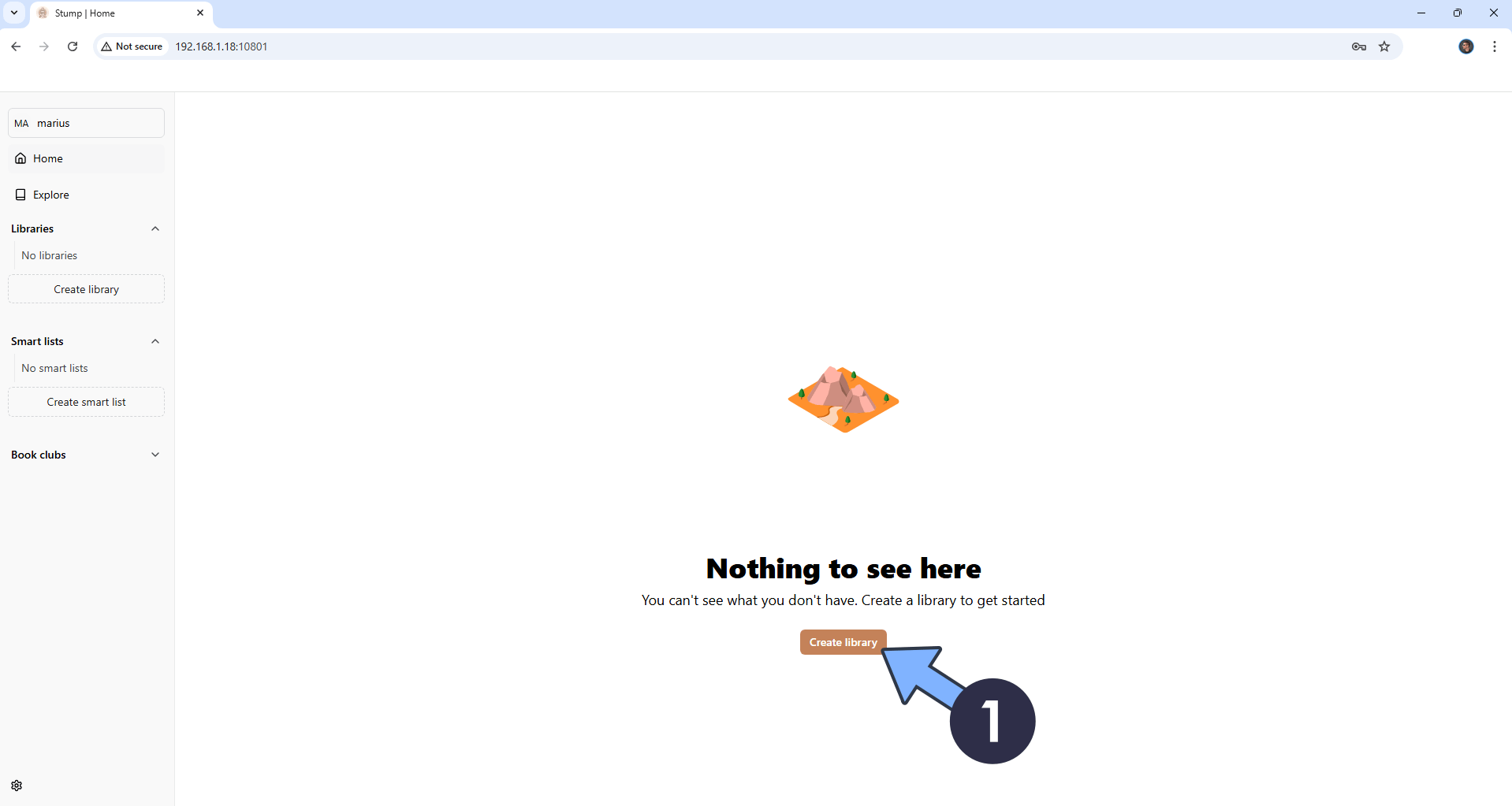
STEP 13
Type in the name of the library and the Path. In the Path area, type in /data Click Next step. Follow the instructions in the image below.
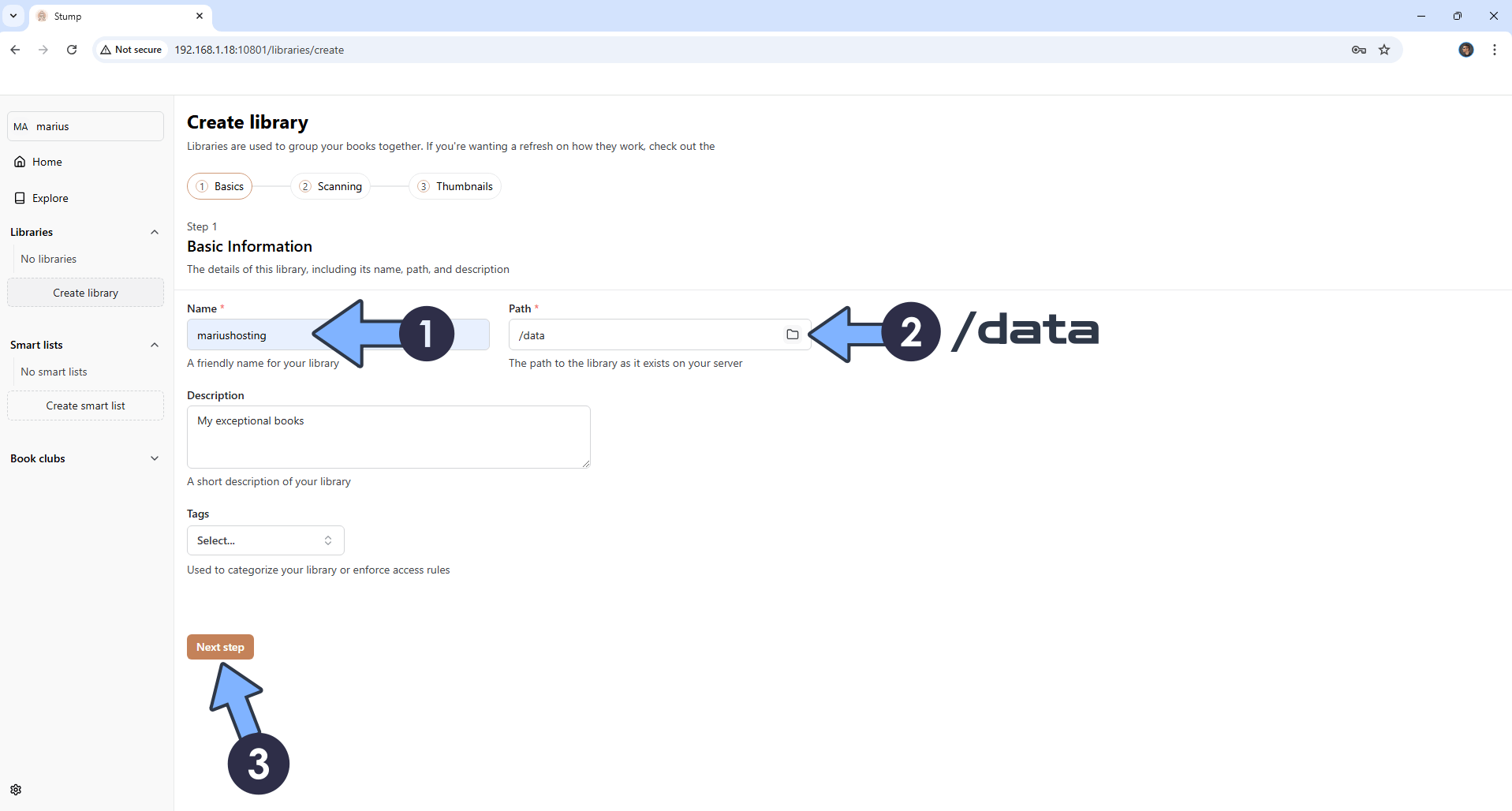
STEP 14
Select your own Library Pattern, then scroll down the page. Follow the instructions in the image below.
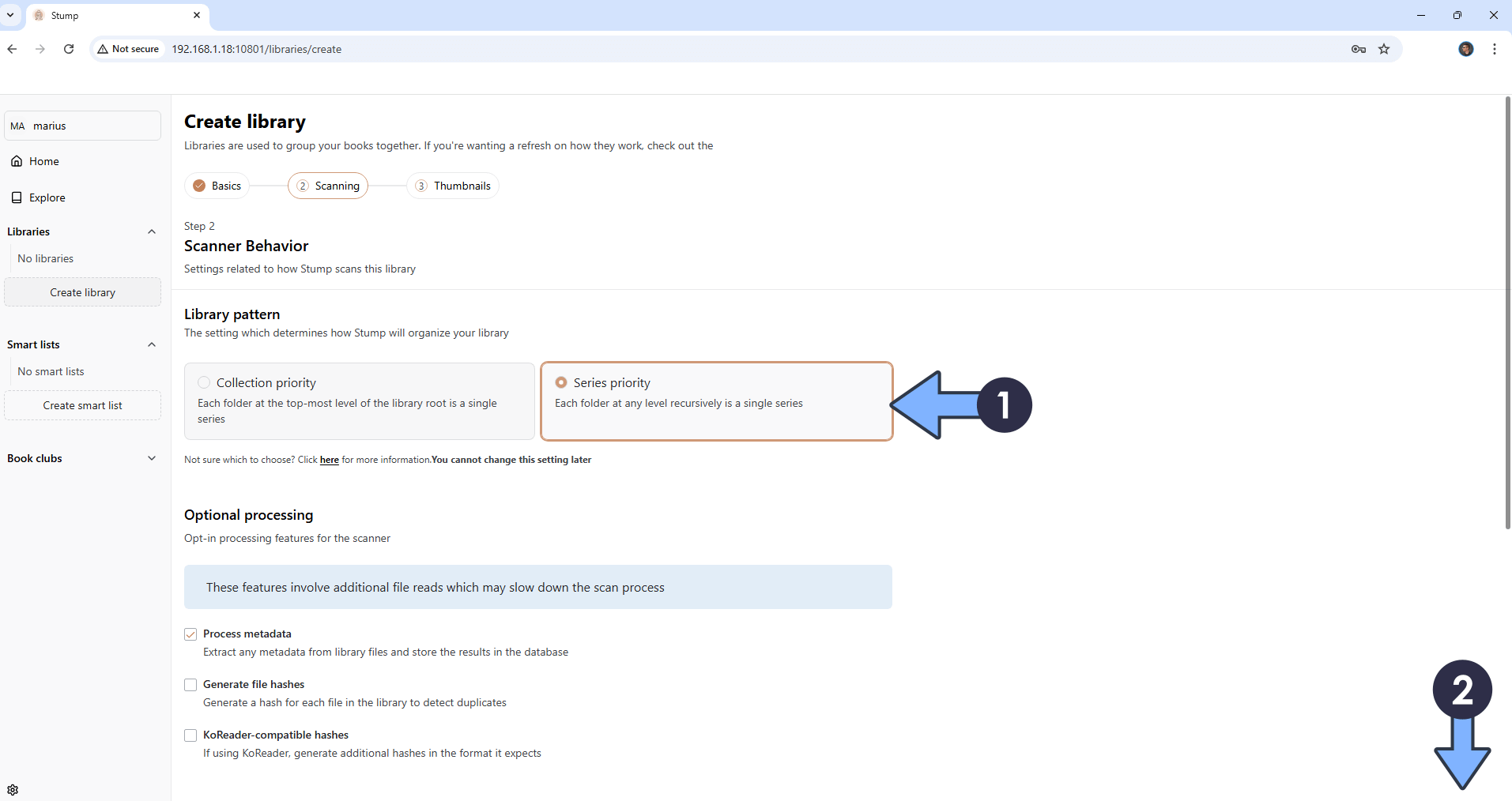
STEP 15
Click Next step. Follow the instructions in the image below.
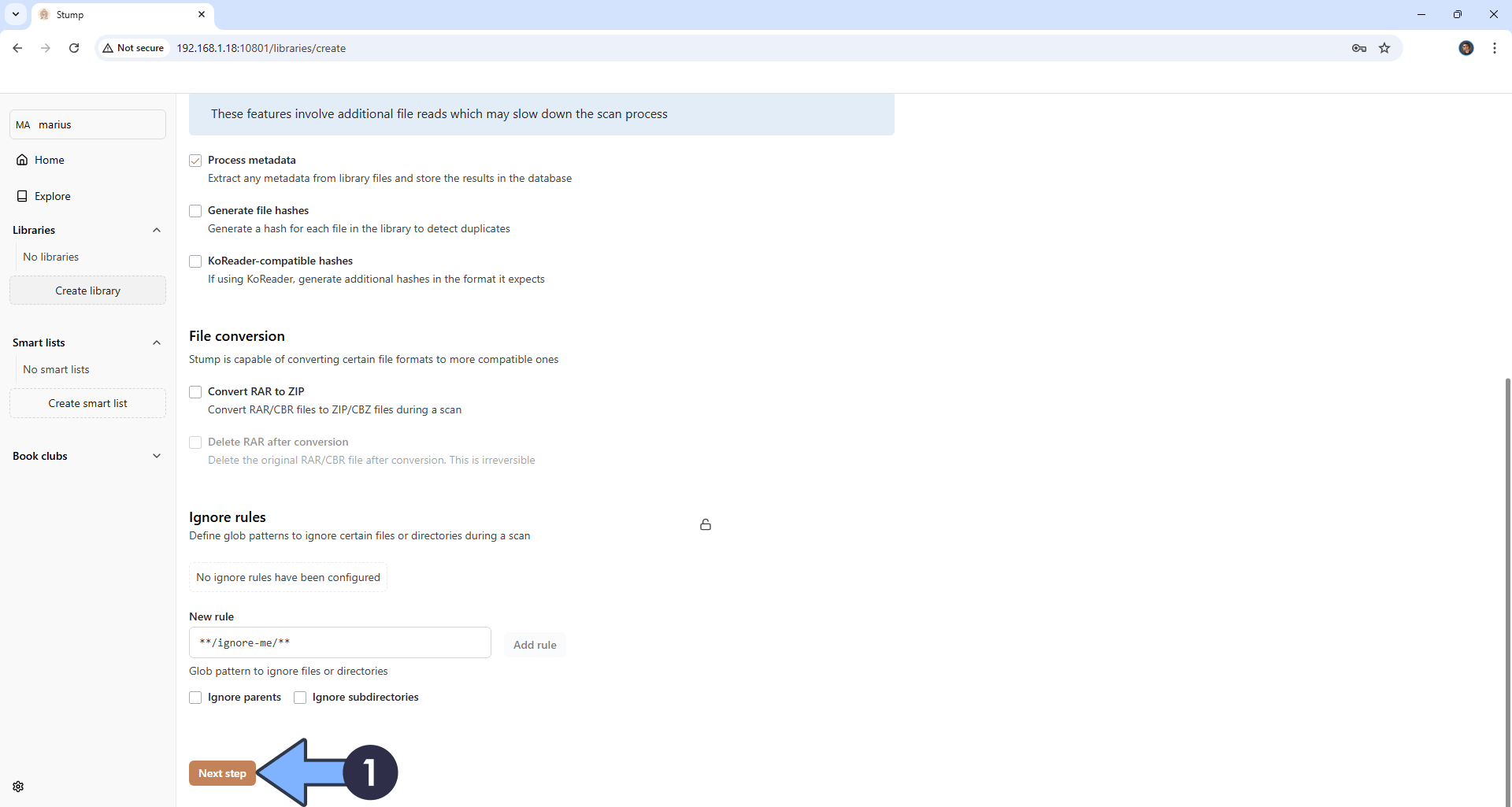
STEP 16
Click Continue to review. Follow the instructions in the image below.
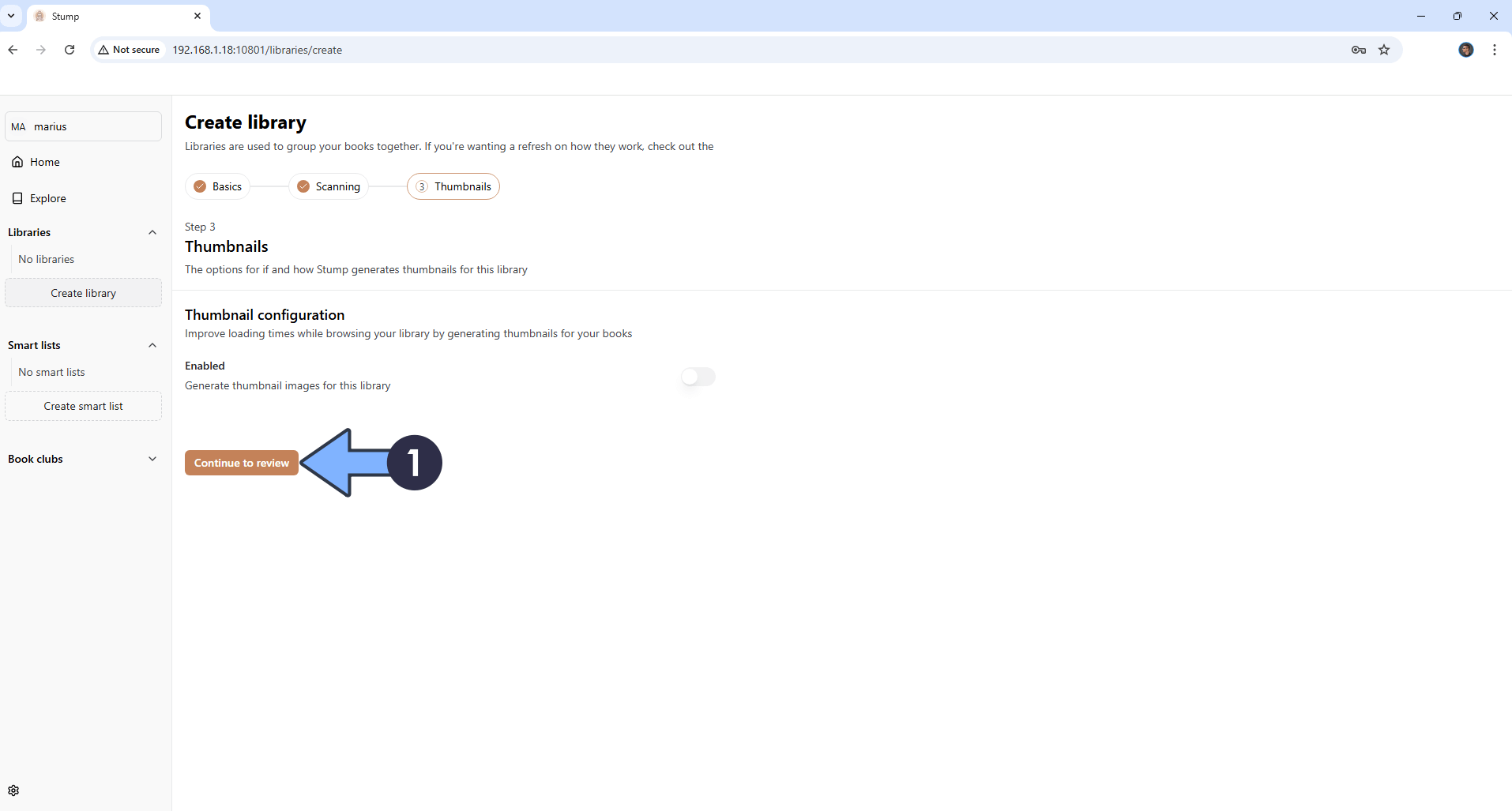
STEP 17
Click Create library. Follow the instructions in the image below.
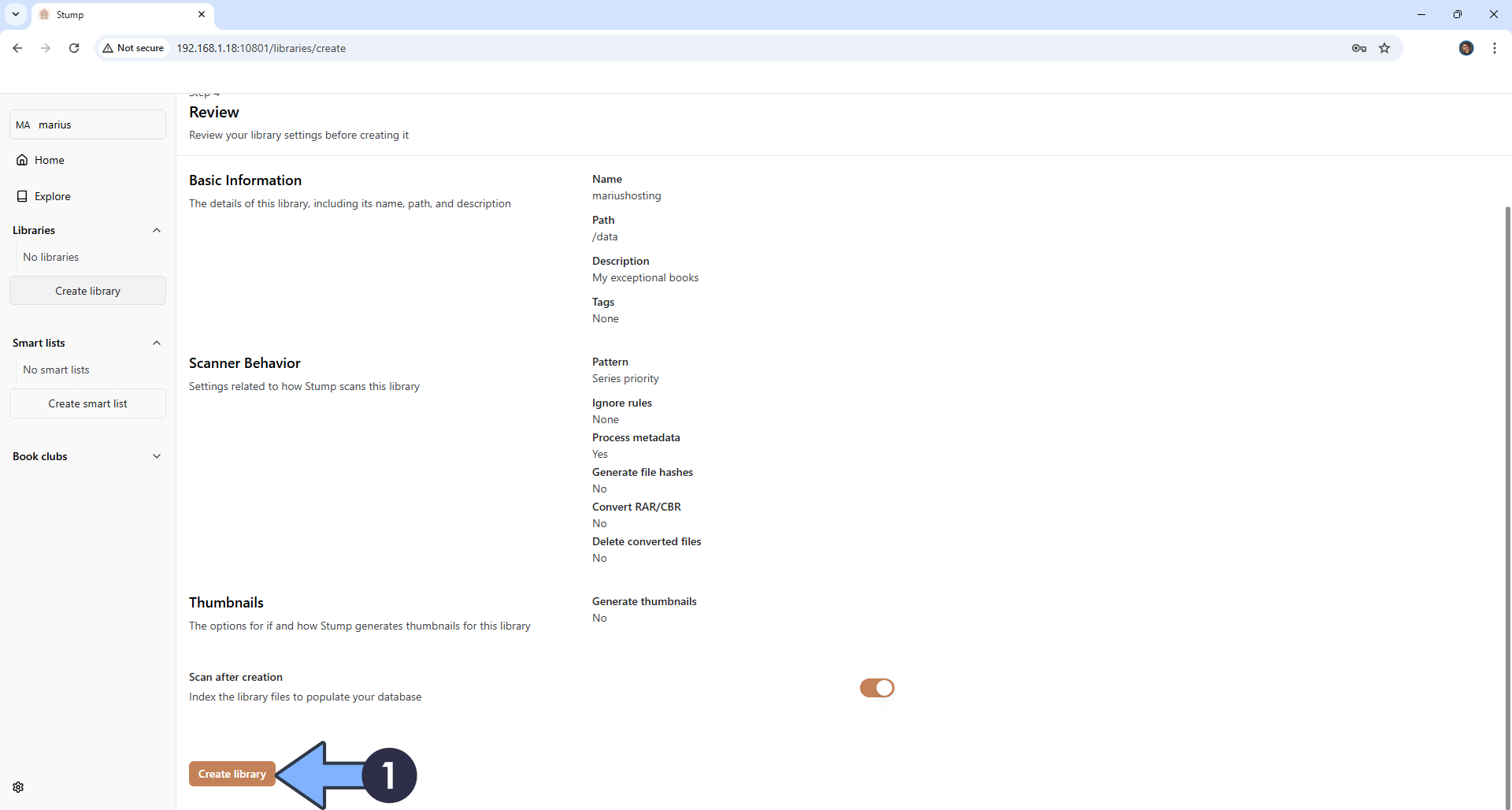
STEP 18
Your own library at a glance!
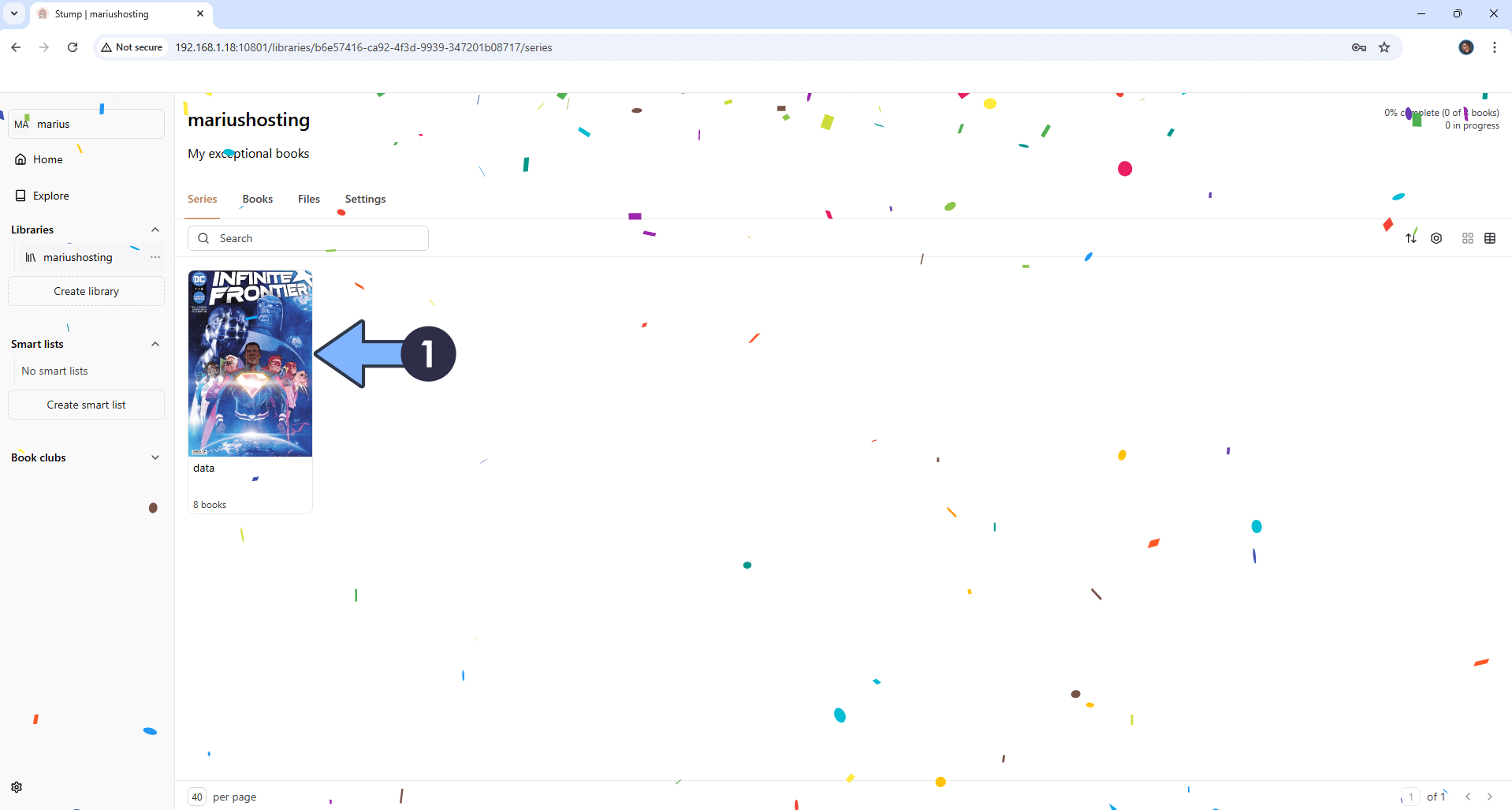
STEP 19
Check your Books!
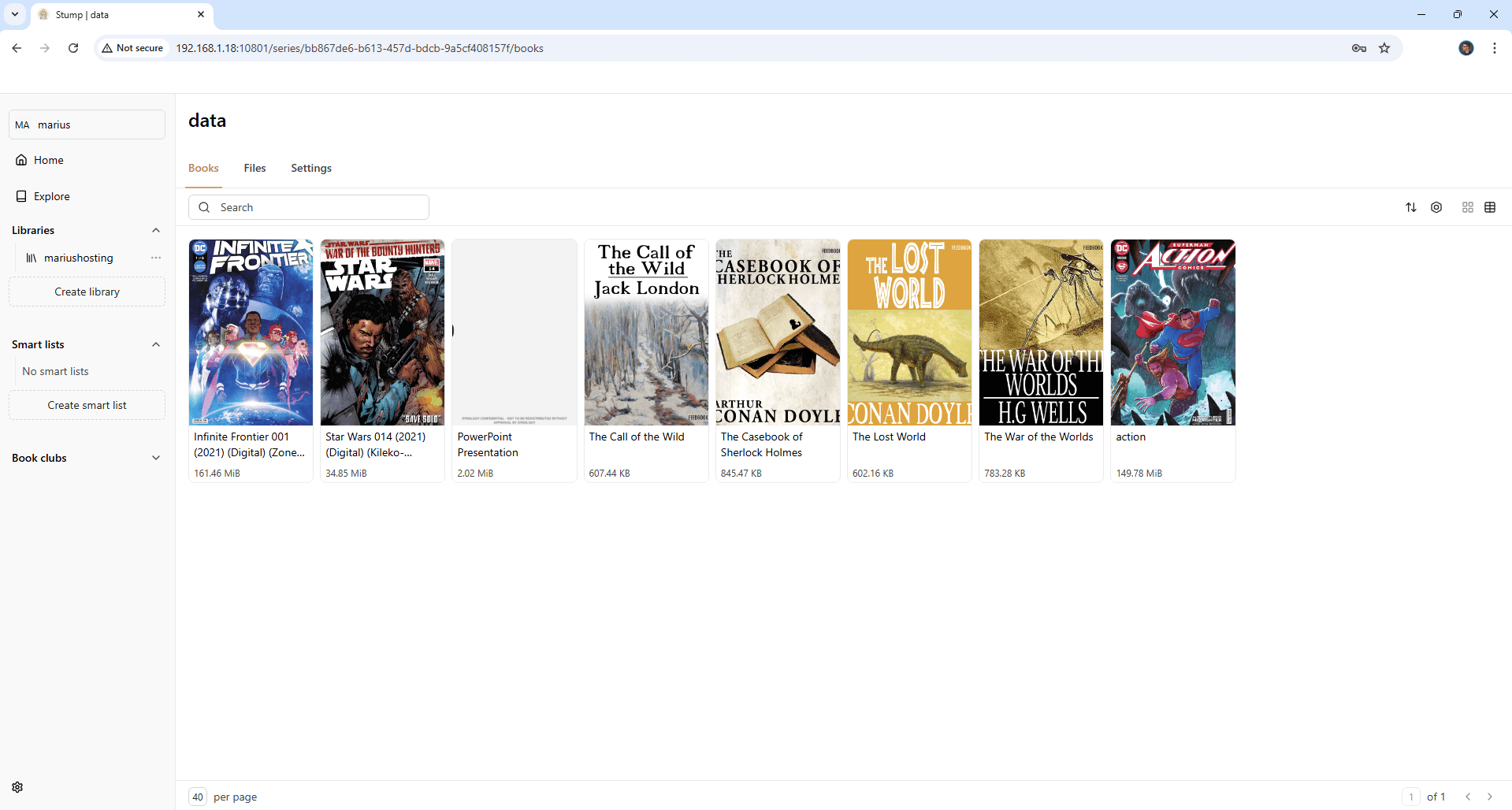
STEP 20
Read your Books!
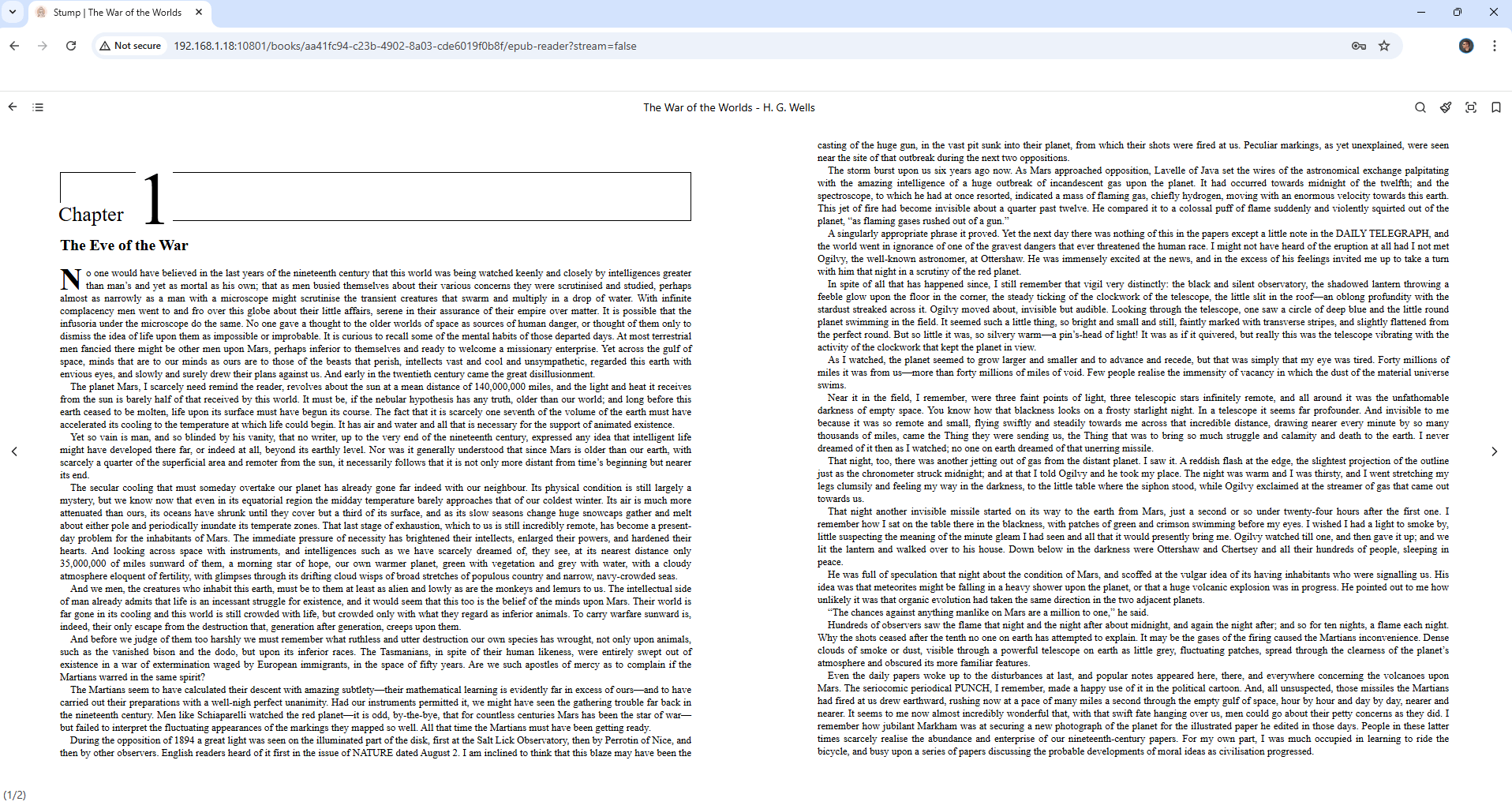
STEP 21
At the bottom of the page, click the Setting icon, then Appearance. Choose your custom theme. Follow the instructions in the image below.
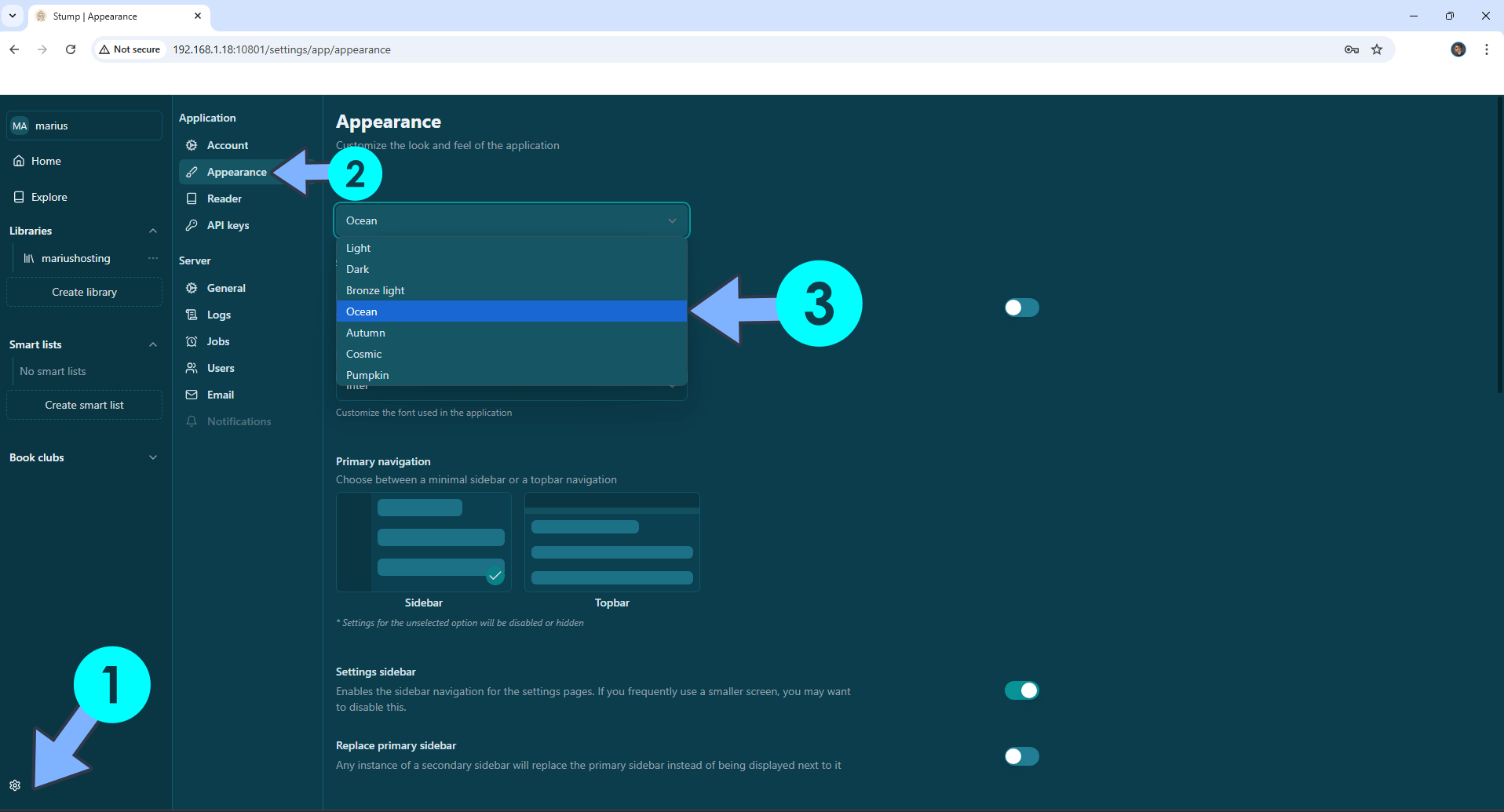
STEP 22
Your Stump Library at a glance!
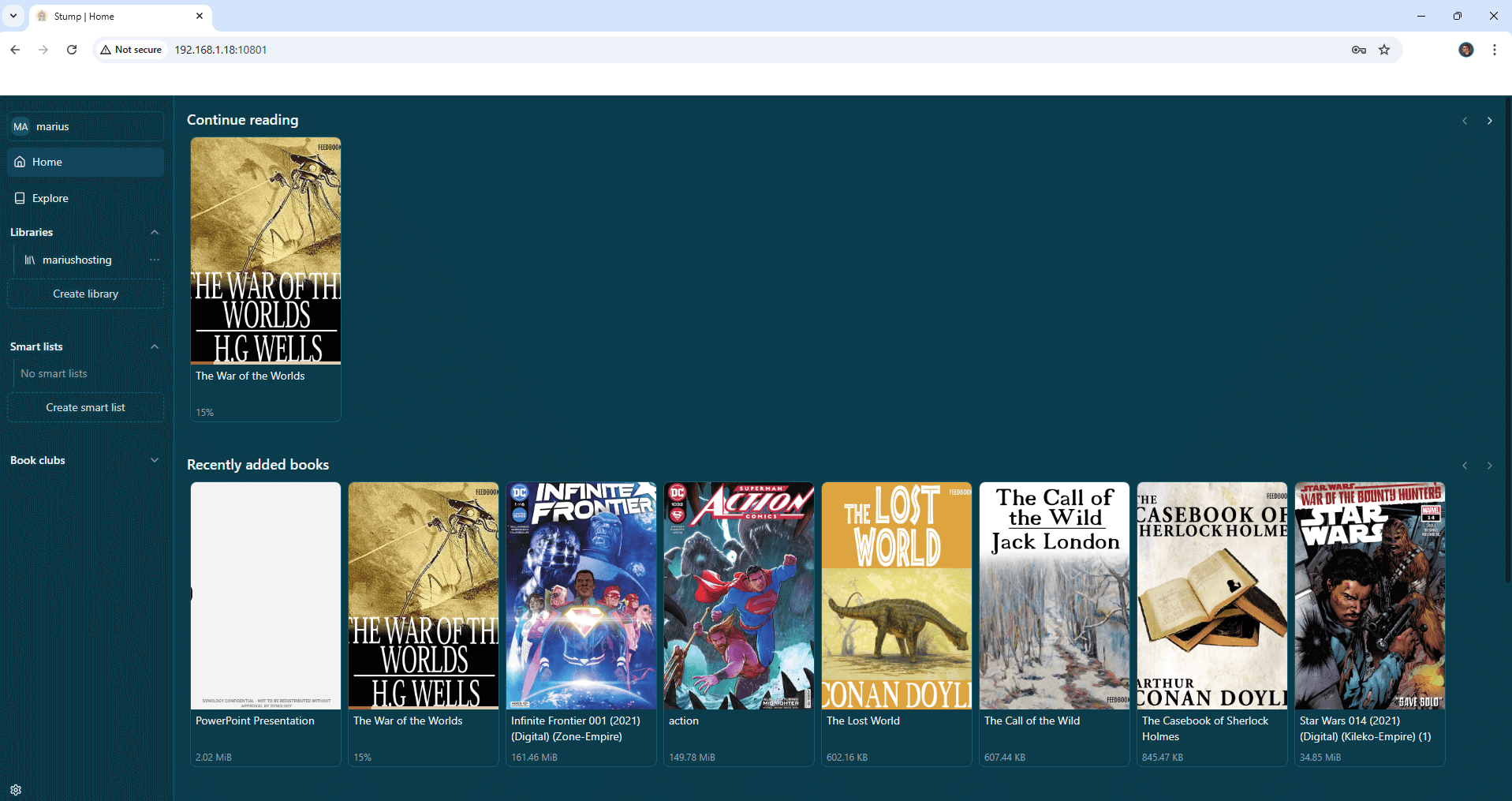
STEP 23
Check out the Full Stump Documentation.
Enjoy Stump!
If you encounter issues by using this container, make sure to check out the Common Docker issues article.
Note: If you want to run the Stump container over HTTPS, check How to Run Docker Containers Over HTTPS. In order to make Stump work via HTTPS, it’s mandatory to activate WebSocket.
Note: Can I run Docker on my Synology NAS? See the supported models.
Note: How to Back Up Docker Containers on your Synology NAS.
Note: Find out how to update the Stump container with the latest image.
Note: How to Free Disk Space on Your NAS if You Run Docker.
Note: How to Schedule Start & Stop For Docker Containers.
Note: How to Activate Email Notifications.
Note: How to Add Access Control Profile on Your NAS.
Note: How to Change Docker Containers Restart Policy.
Note: How to Use Docker Containers With VPN.
Note: Convert Docker Run Into Docker Compose.
Note: How to Clean Docker.
Note: How to Clean Docker Automatically.
Note: Best Practices When Using Docker and DDNS.
Note: Some Docker Containers Need WebSocket.
Note: Find out the Best NAS Models For Docker.
Note: Activate Gmail SMTP For Docker Containers.
This post was updated on Saturday / October 11th, 2025 at 2:09 PM
